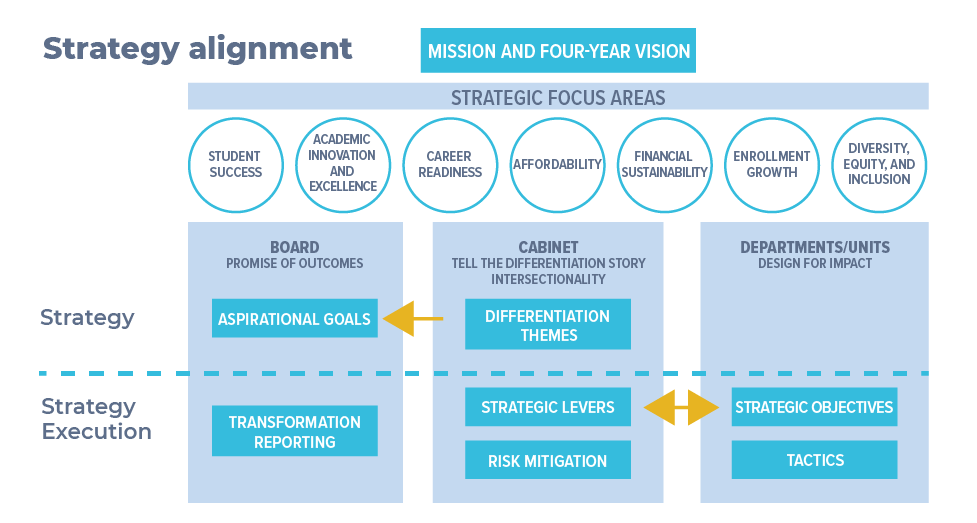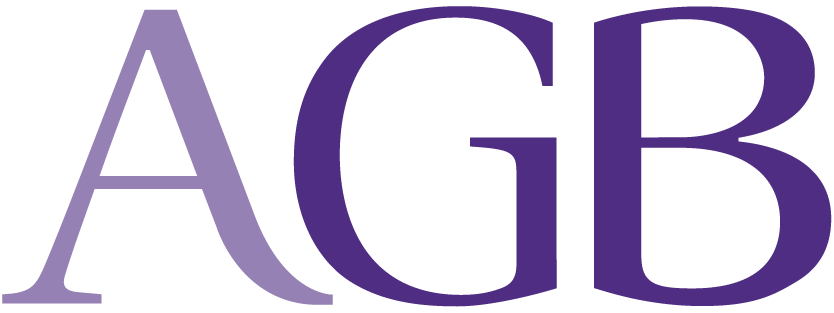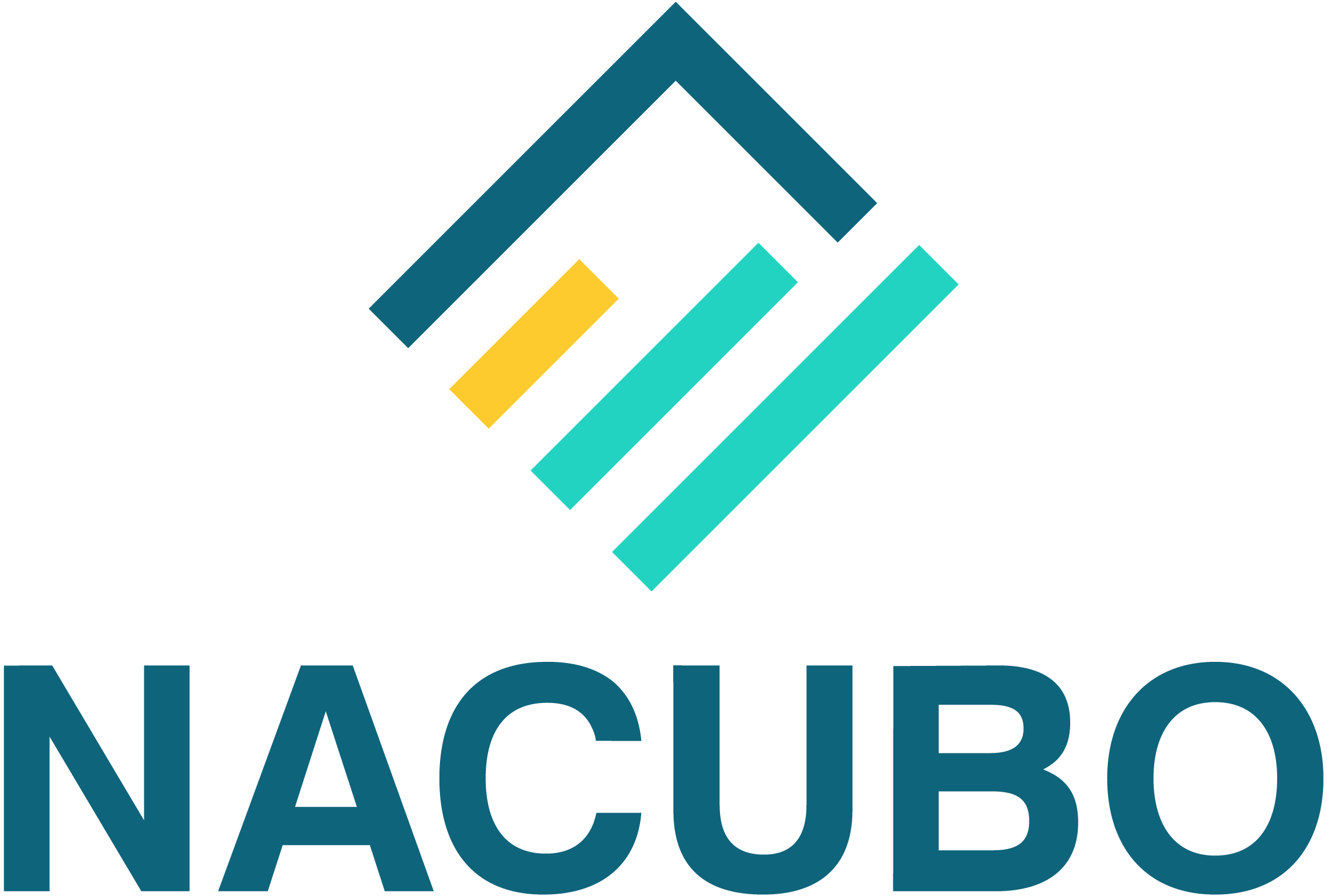Boardroom Conversations:
Does Our Institution Have an Effective Strategic Planning Process?
Michael Townsley’s Small College Guide to Financial Health: Weathering Turbulent Times (NACUBO, 2009) offers an alternative way to pose Eric Denna’s inquiry regarding, “Where the institution is today, but more importantly where it is headed.” In his chapter on strategic planning, Townsley observes that strategic planning is “very difficult to do, but easy to explain”—that is, “strategic planning is selling a service to a target market at a price so that a sufficient number of buyers buy the product to generate enough revenue to maintain the financial integrity of the institution.”1 In the absence of a strategic plan, suggests Townsley, financially distressed colleges and universities “tend toward the path of least resistance, commonly known as ‘muddling through’ but formally deemed ‘incrementalism’.”2 In this environment, institutions make “insignificant” or “uncoordinated” decisions—that is, these incremental changes lack strategic vision and often fail to move the institution forward. This incrementalism can lead to the depletion of critical resources and more importantly the loss of time, potentially an institution’s most valuable commodity, to successfully address any immediate crisis it may be facing.3
To avoid this suboptimal outcome, Townsley believes it is the role of the president, as the CEO, in consultation with the senior leadership team, the governing board, and other campus stakeholders, to lead a strategic planning process that:
- Prepares diagnostics such as the current state of the institution, prepares forecasts, and conducts environmental and SWOT4 analyses;
- Selects and rank orders the major strategic issues;
- Develops, tests, and rank orders strategic options; and
- Prepares a strategic plan, action plans, monitoring plan, and implementation schedule.5
To successfully perform each of these tasks and accomplish the desired results, Townsley prescribes a series of activities, referred to as “strategic diagnostics,” which he believes will help institutions avoid making the fatal mistakes that can lead to mission failure and will better prepare the college or university for any unanticipated challenges and/or mid-course corrections if required.6 Townsley’s diagnostic process is rigorous and data driven, and if executed well will allow institutional leadership to avoid short-term solutions and focus on long-term strategies essential for promoting the sustainability of the college or university’s business model.7
Denna and Townsley’s research offer helpful guidelines for the conversations governing boards and senior leadership need to have when addressing the multidimensional nature of charting a path forward in challenging times. Yet, a key to any successful strategic planning process is the ability to operationalize the agreed to and differentiated strategy into the college’s operations. The Baker Tilly graphic below explores that concept further and shows how an effective strategy planning process recognizes the various roles played and key activities driven across the institution.
Strategy Alignment: From Plan to Operations

Baker Tilly
Indeed, once a plan is adopted, Townsley believes a successful outcome requires “operational management,” which he lays directly at the feet of the president—“Efficiently managing operations depends on presidential leadership. The president must know the outcomes of important decisions, the performance of the institution at all levels, the skills of the chief management team, the obstacles or challenges facing the institution, and the strategies and methods used to respond to the obstacles and challenges.”8
In his work Collaborative Strategic Planning in Higher Education (NACUBO, 2009), Patrick Sanaghan offers a slightly different perspective, but one that is equally valuable, when he states that there is no “silver bullet” or single recommended model for guaranteeing a successful implementation of a strategic plan. While the marketplace has offered methodologies based on “linear-thinking”—Gantt charts, critical path methods, financial modeling, and a host of other tools, the reality is that “only people with all their quirks, interests, passion, energy, and hopes can implement a strategic plan.”9 For most institutions a successful outcome is predicated on both inclusive presidential leadership and the ability to move an institution through change with determined commitment by the individual stakeholders across all levels of the organization.
1 Michael K. Townsley, Small College Guide to Financial Health: Weathering Turbulent Times (Washington, D.C.: National Association of College and University Business Officers, 2009), 169.
2 Townsley, Small College Guide to Financial Health, 171.
3 Townsley, Small College Guide to Financial Health, 173–174.
4 SWOT is an acronym for Strengths, Weaknesses, Opportunities, and Threats and is used as a method for framing strategic choices. SWOT analysis asks the assembled group to list items under the four categories in a matrix along the axes of (1) the internal or external environment and (2) a positive or negative impact on the organization.
5 Townsley, Small College Guide to Financial Health, 180–185.
6 Townsley, Small College Guide to Financial Health, 180–185.
7 Baker Tilly offers a helpful web resource for higher education on fiscal resiliency. For more information, visit. https://www.bakertilly.com/insights/fiscal-resiliency-resources-for-higher-education.
8 Townsley, Small College Guide to Financial Health, 167.
9 Patrick Sanaghan, Collaborative Strategic Planning in Higher Education (Washington, D.C.: National Association of College and University Business Officers, 2009), 93.
Related Resources
Sanaghan, Patrick. Collaborative Strategic Planning in Higher Education. Washington, D.C.: National Association of College and University Business Officers, 2009.
Shinn, Larry D. Strategic Thinking and Planning in Higher Education: A Focus on the Future. Washington, D.C.: Association of Governing Boards, 2017. https://agb.org/product/strategic-thinking-and-planning-in-higher-education-a-focus-on-the-future/.








